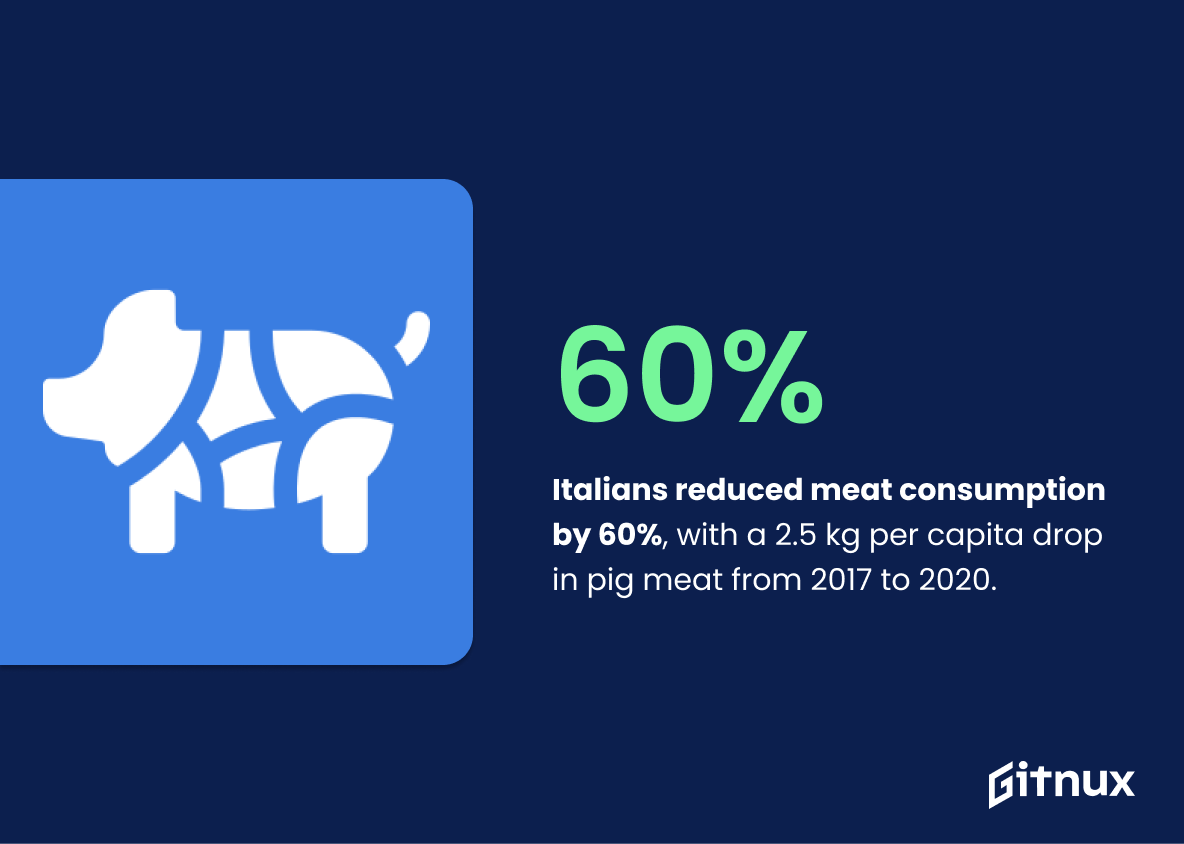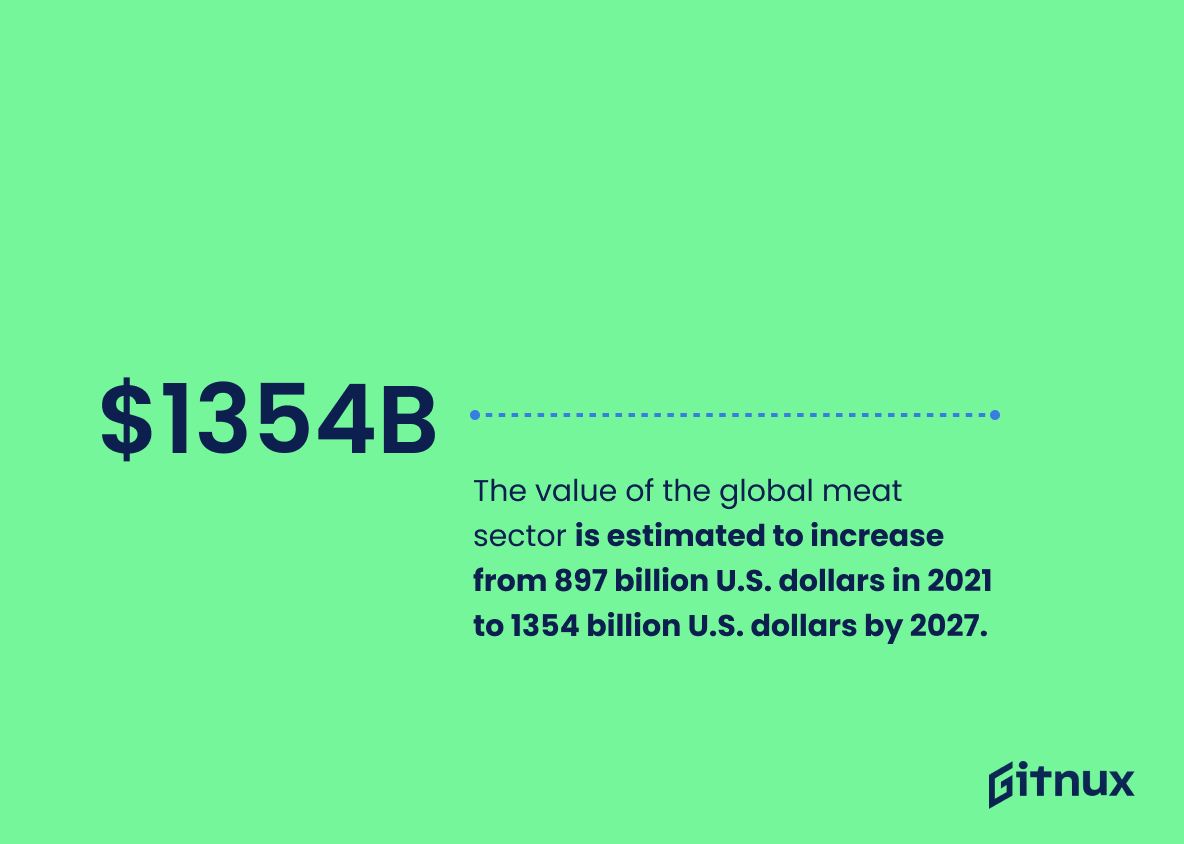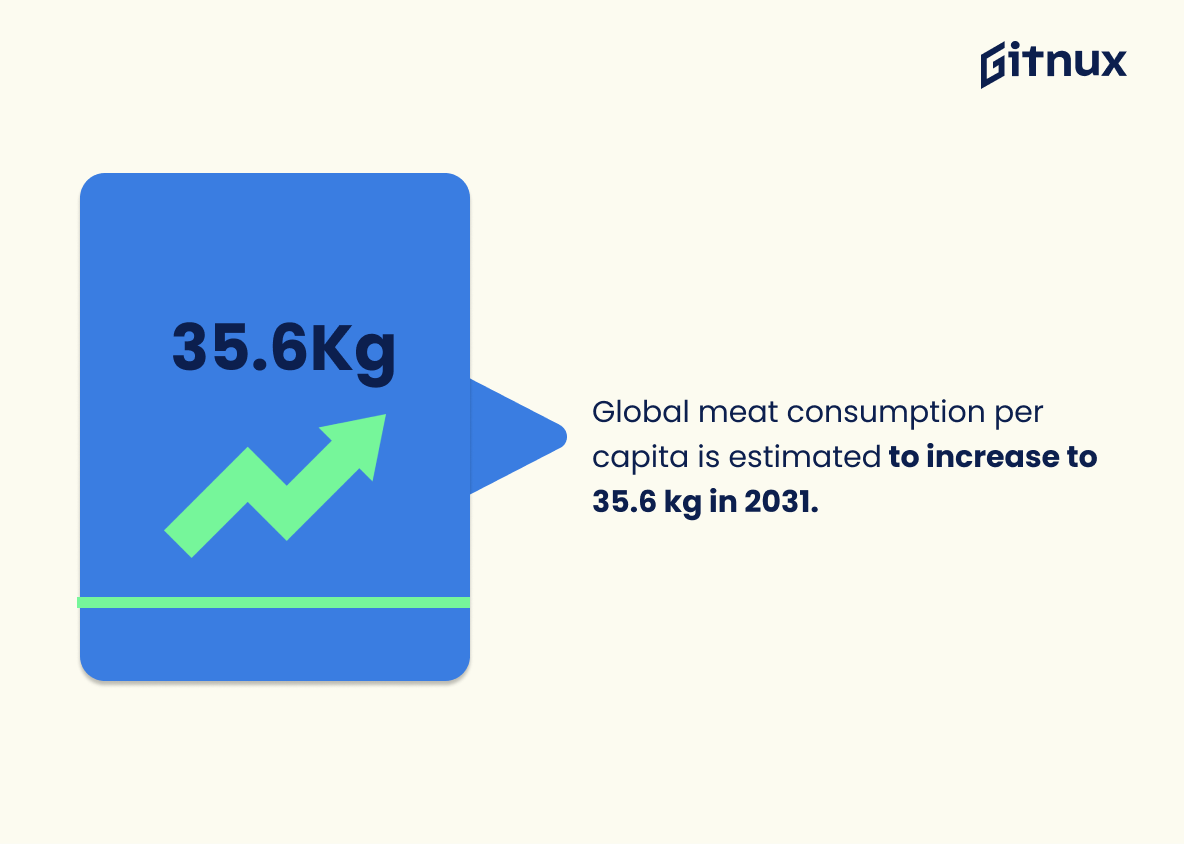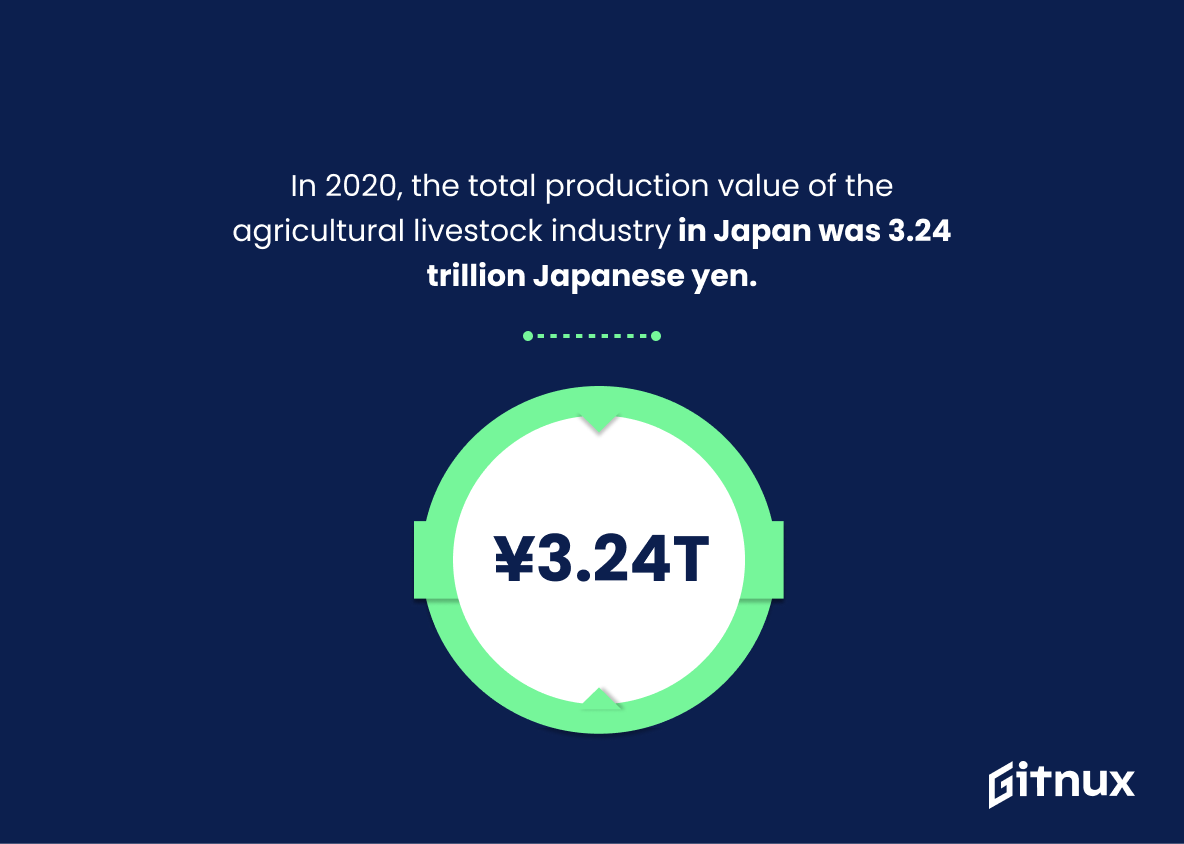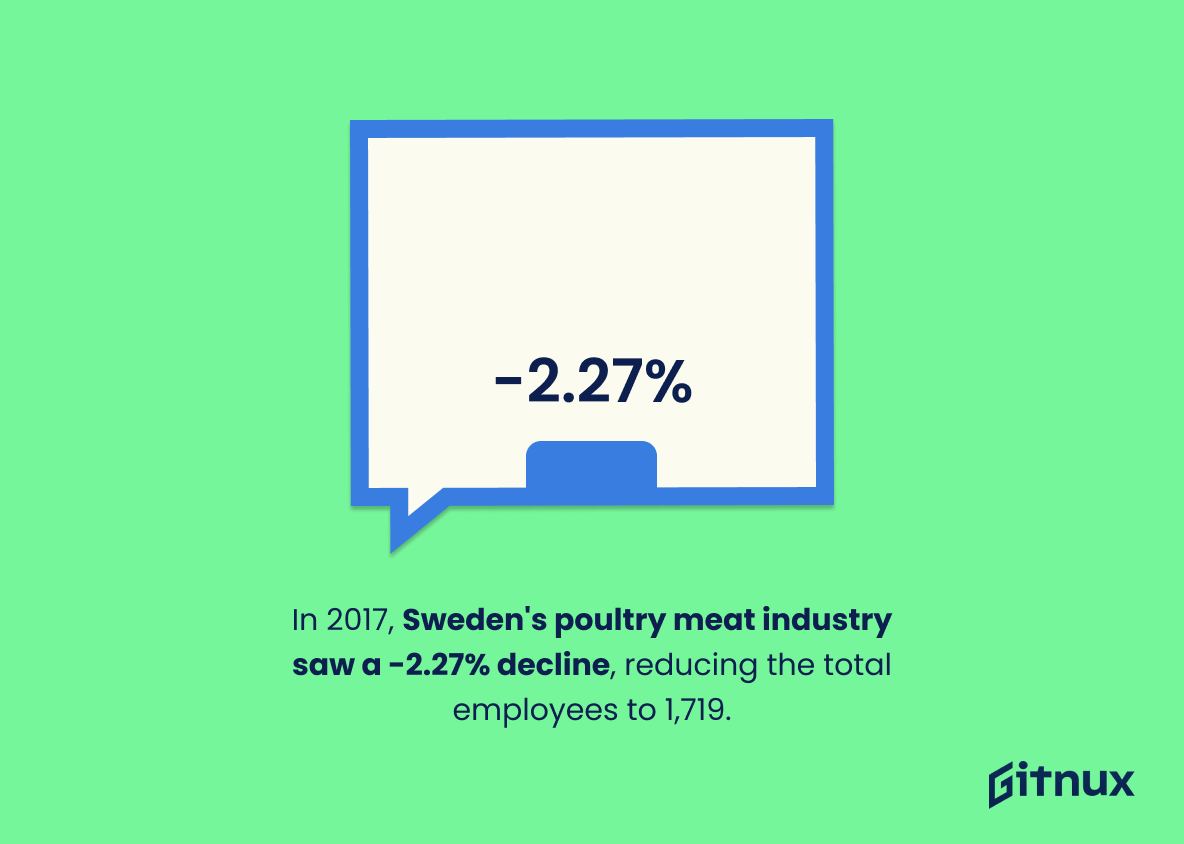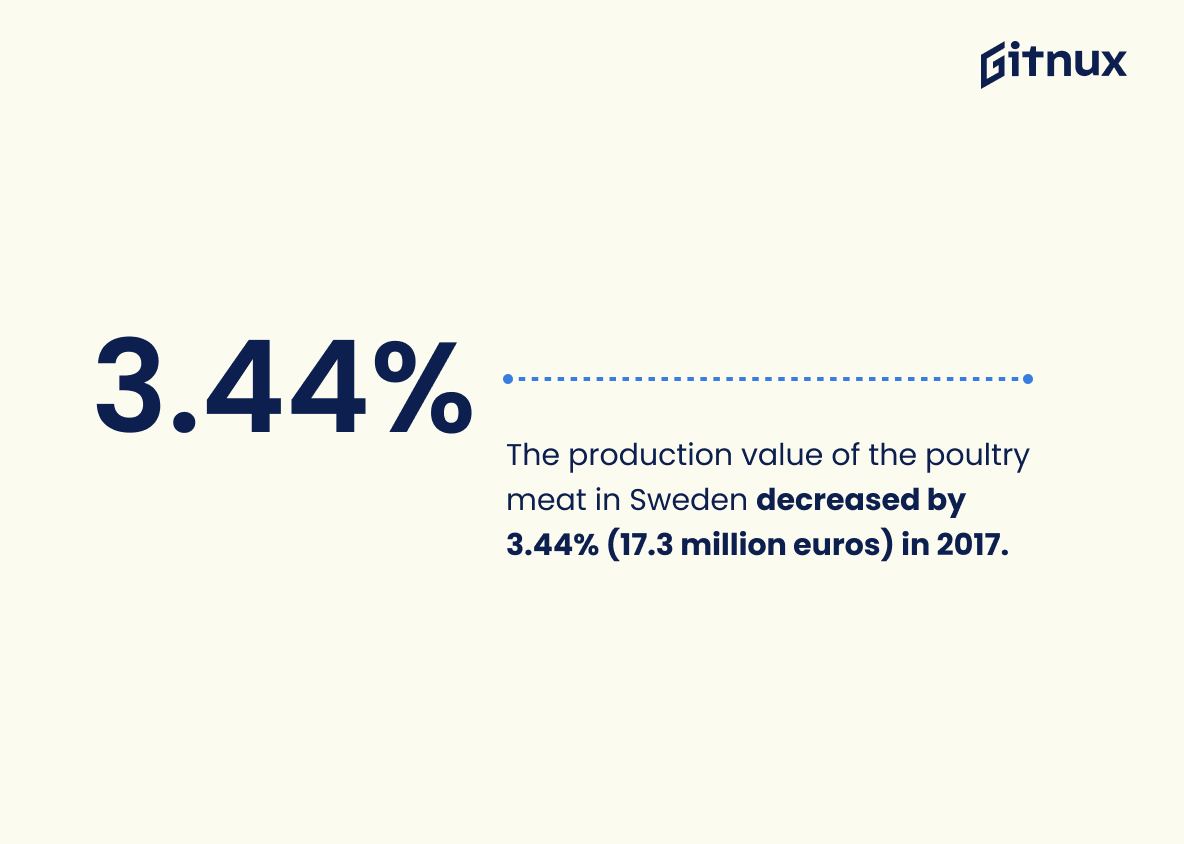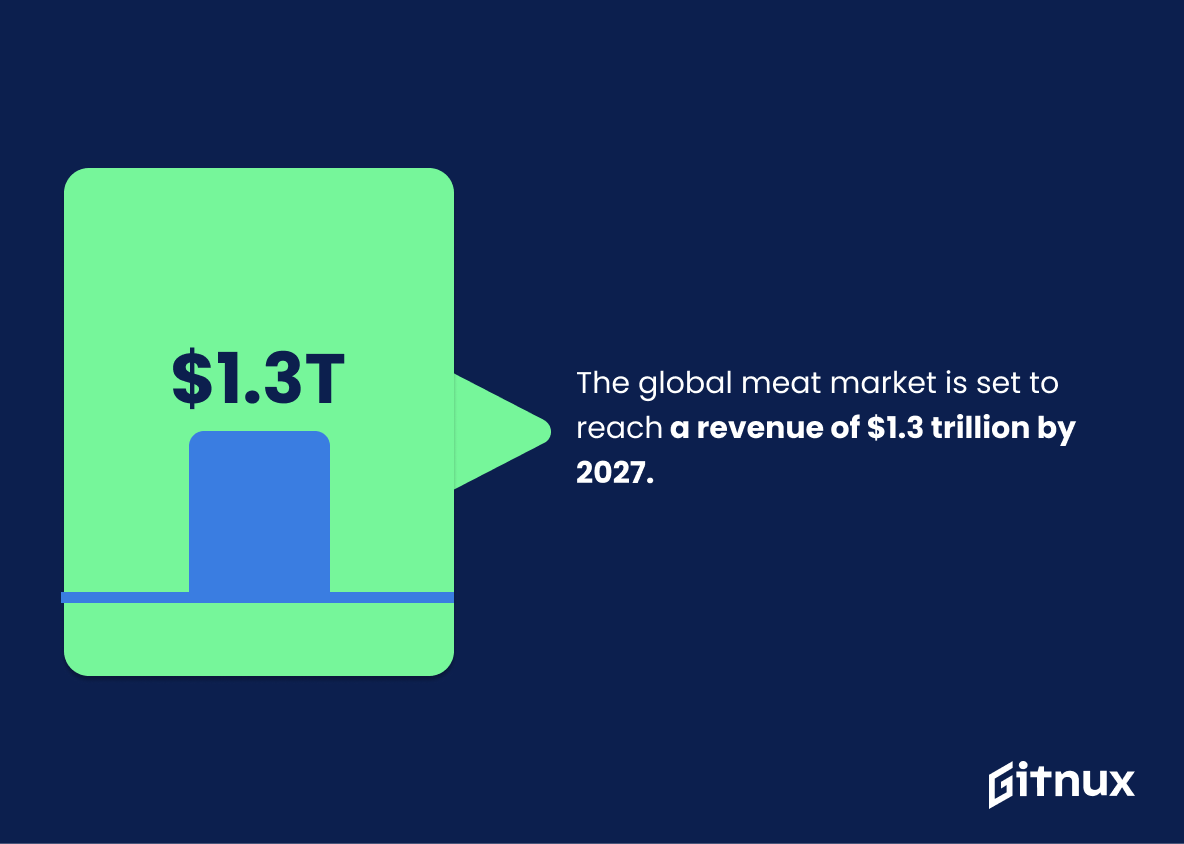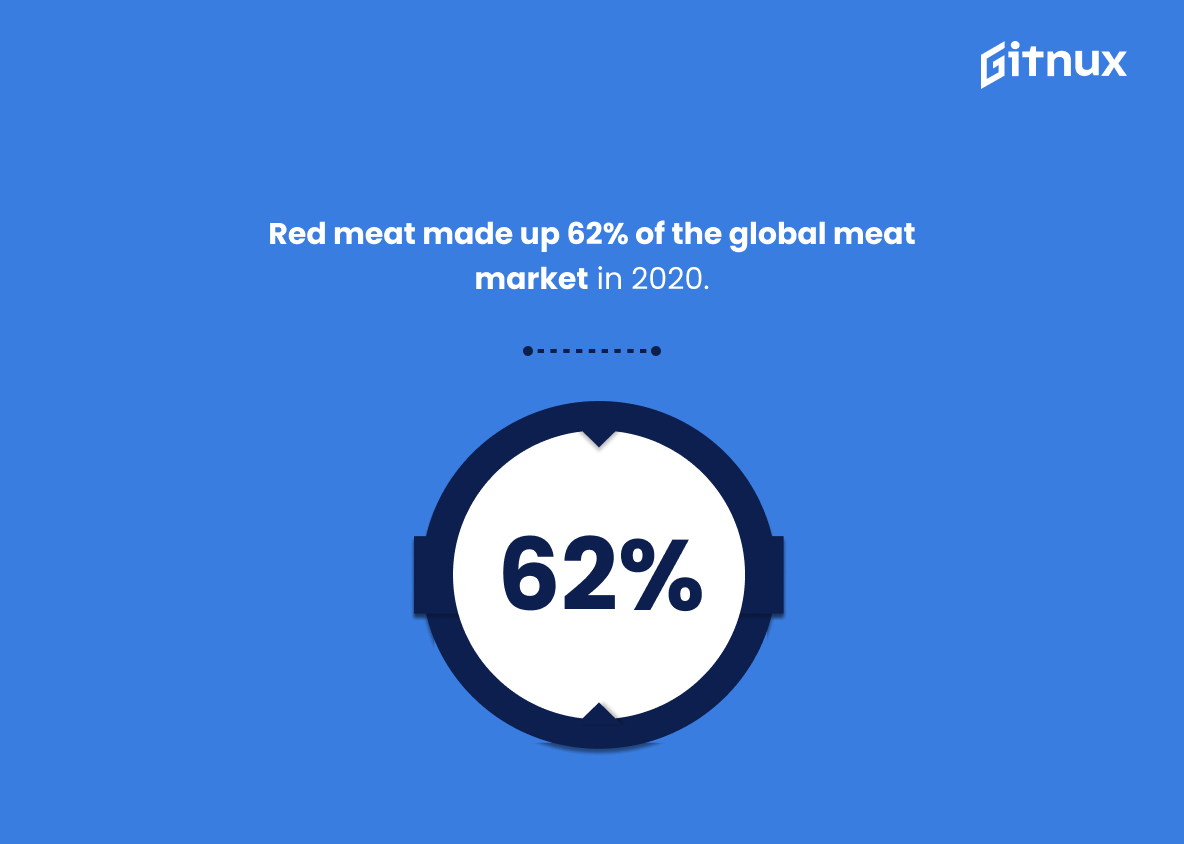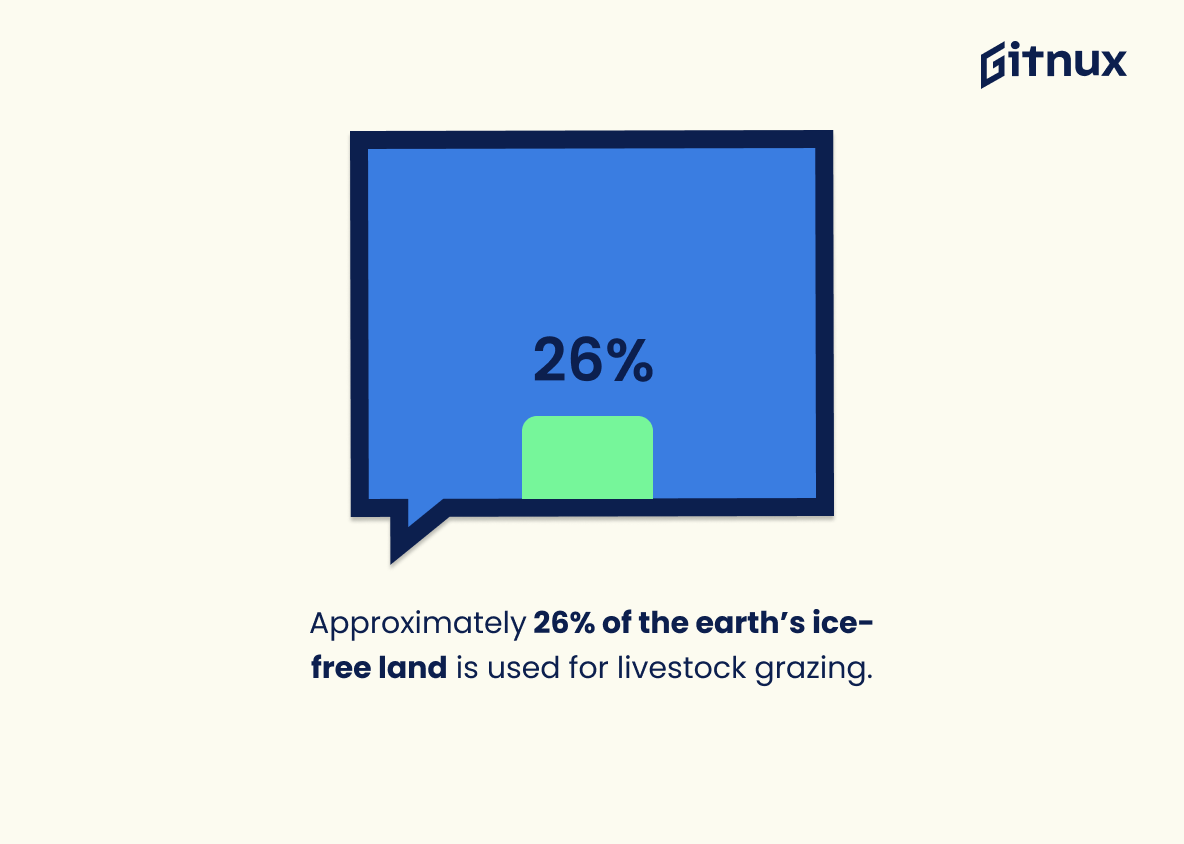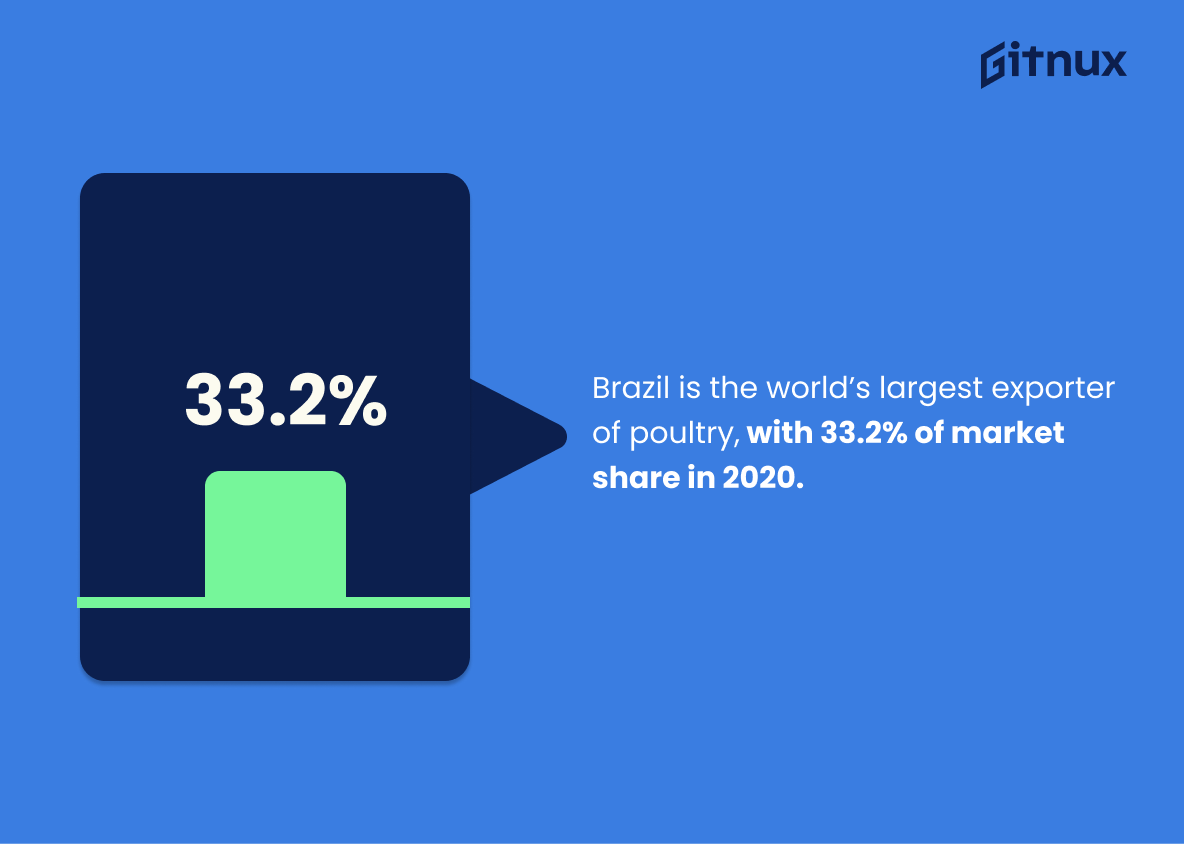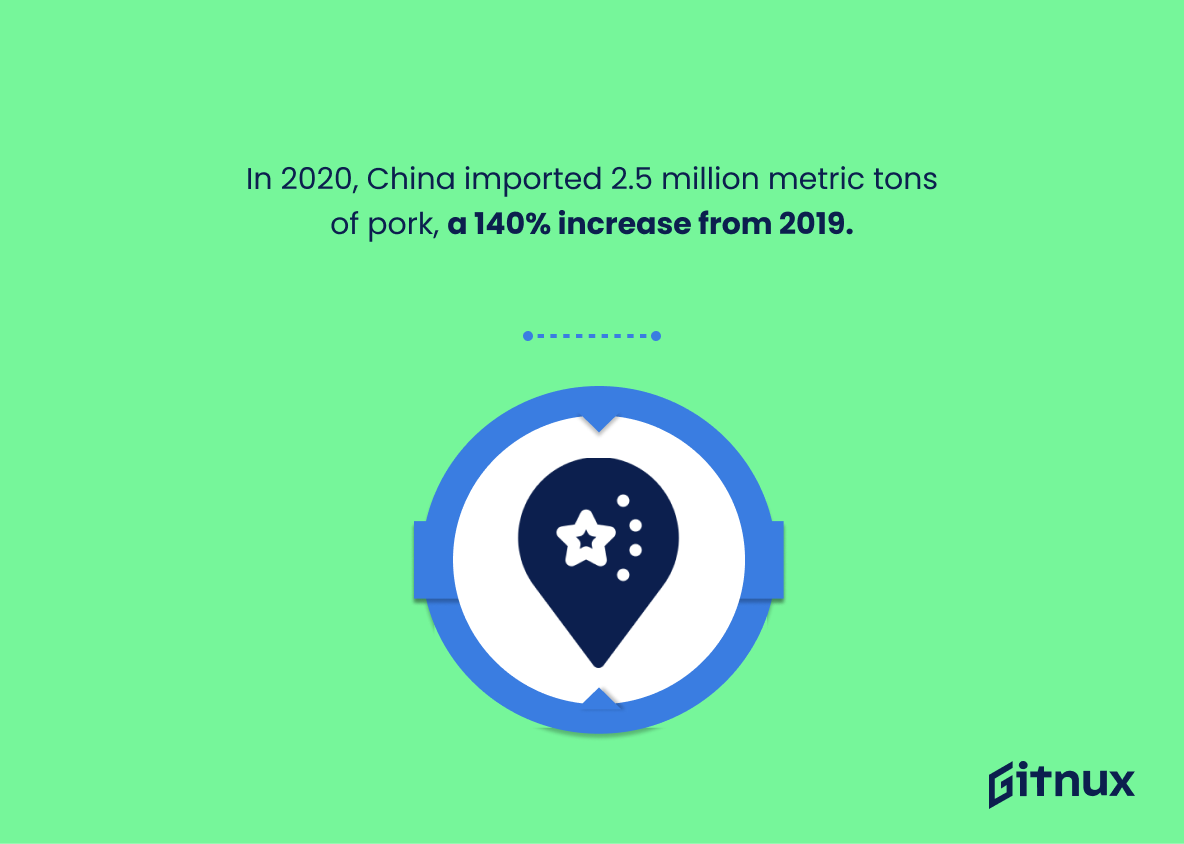The meat industry is a major contributor to the global economy, providing jobs, food, and income for millions of people around the world. But how much do we really know about the meat industry?
In this blog post, we will take a look at some of the most interesting statistics about the meat industry, from production to consumption and more.
We will explore the current state of the industry, its impact on the environment, and the potential for growth in the future. So, let’s dive in and explore the fascinating world of meat industry statistics.
Meat Industry: The Most Important Statistics
The value of the global meat sector is estimated to increase from 897 billion U.S. dollars in 2021 to 1354 billion U.S. dollars by 2027.
In 2020, the total production value of the agricultural livestock industry in Japan was 3.24 trillion Japanese yen, with dairy cattle farming generating the highest output.
Meat Industry Statistics Overview
60% of Italians have reduced their consumption of meat, as evidenced by a 2.5 kg per capita decrease in pig meat consumption between 2017 and 2020.
This shows that consumer preferences are shifting away from meat consumption, which could have a significant impact on the industry in the future.
The average monthly expenditure on pork meat in Italy has decreased from 10.89 euros in 2014 to 9.79 euros in 2021.
The global market value for processed meat is estimated to increase from 523.1 billion U.S. dollars in 2020 to 737 billion U.S. dollars in 2026.
The value of the global meat sector is estimated to increase from 897 billion U.S. dollars in 2021 to 1354 billion U.S. dollars by 2027.
This shows the projected growth of the global meat sector, which can be used to inform decisions made by stakeholders in the industry.
Global meat consumption per capita is estimated to increase to 35.6 kg in 2031.
North America had the highest per capita consumption of meat at 98.5 kg per person, while Africa had the lowest at 12.7 kg per person, with the world average at 34.01 kg.
In 2020, the total production value of the agricultural livestock industry in Japan was 3.24 trillion Japanese yen, with dairy cattle farming generating the highest output.
This shows the importance of the agricultural livestock industry in Japan, particularly dairy cattle farming, which is the most valuable sector.
In 2020, Japan’s per capita consumption of meat exceeded 30 kg, with poultry making up 14 kg per person.
The meat industry in Japan is thriving, and that the demand for meat products is high. This could indicate that the industry is in a good position to continue to grow and provide a reliable source of income for producers.
The number of employees in the poultry meat industry in Sweden decreased by 40 (-2.27%) in 2017, down to 1,719 total employees.
This decrease provides insight into the overall trends of the industry, and can help inform decisions about the industry in the future.
The production value of the poultry meat processing and preserving industry in Sweden decreased by 3.44% (17.3 million euros) in 2017.
It indicates a decrease in the overall production value of the poultry meat industry in Sweden, which could be indicative of a larger trend in the meat industry.
The global meat market is set to reach a revenue of $1.3 trillion by 2027.
It is a lucrative and profitable sector. It is a clear indication that the meat industry is a major player in the global economy, and its continued success is essential for the economic health of many countries. This statistic is an important reminder of the importance of the meat industry and its potential for growth in the coming years.
Red meat consumption accounted for approximately 62% of the world’s meat market in 2020.
This highlights the sheer size and scope of the industry, and the impact it has on the world’s dietary habits. It is an important statistic to consider when discussing the meat industry, as it provides insight into the current state of the market and the potential for growth.
In 2019, the United States produced 106.5 billion pounds of meat.
This staggering figure that speaks to the immense production capabilities of the industry and the vast amount of resources it requires to sustain such a level of output. It is a powerful reminder of the importance of the meat industry in the US economy and its impact on the lives of millions of people.
Approximately 26% of the earth’s ice-free land is used for livestock grazing.
A significant portion of the earth’s land is being used to support the production of livestock, which has a detrimental effect on the environment. This statistic serves as a reminder that the meat industry has a major role to play in the global climate crisis and that it is essential to reduce our reliance on animal products in order to protect our planet.
The livestock industry is responsible for about 14.5% of global greenhouse gas emissions.
This highlights the need for more sustainable practices in the industry to reduce its contribution to global greenhouse gas emissions.
Brazil is the world’s largest exporter of poultry, with 33.2% of market share in 2020.
This demonstrates the country’s ability to produce and export poultry on a large scale, making it a major player in the market. This statistic is a valuable insight into the meat industry, providing a glimpse into the competitive landscape and the countries that are leading the way.
In 2020, China imported 2.5 million metric tons of pork, a 140% increase from 2019.
China’s demand for pork has skyrocketed, likely due to the pandemic and the resulting disruption of global supply chains. This statistic is a powerful reminder of the immense impact the pandemic has had on the meat industry, and how quickly it can change.
Approximately 56 billion chickens are raised worldwide yearly for consumption.
This highlights the sheer number of chickens that are bred and slaughtered each year to meet the demands of the global population. It is a sobering reminder of the impact that the meat industry has on the environment and animal welfare.
In 2019, the average global per capita meat consumption was 33.5 kg/person.
This highlights the sheer amount of meat consumed by the average person, and the extent to which the industry has been able to penetrate the diets of people around the world. It is a powerful reminder of the influence the meat industry has had on our lives, and the importance of understanding the industry’s impact on our health, environment, and economy.
In 2020, the per capita meat consumption in the United States was approximately 223 pounds.
This speaks to the immense scale of the meat industry and the impact it has on the environment, animal welfare, and public health. It is a powerful reminder of the need to consider the consequences of our dietary choices and the importance of sustainable meat production.
In 2019, Australia exported about 68% of its total beef production.
The country is a major exporter of beef. It demonstrates the strength of the industry and its ability to meet the demands of the global market. This is an important point to consider when discussing the meat industry, as it shows the potential for growth and profitability.
The alternative protein sector could make up 22% of the global protein market by 2035.
Alternative proteins could make up a significant portion of the global protein market in the next 15 years. This could have a major impact on the industry, as it could lead to a shift in consumer preferences and a decrease in demand for traditional meat products. This could have a ripple effect on the industry, from the producers to the retailers, and could have a lasting impact on the industry as a whole.
Canada produced nearly 1.7 million tonnes of meat in 2020.
This highlights the sheer scale of production and the impact it has on the economy and the environment. It also serves as a reminder of the importance of the industry in providing food for Canadians.
Germany produced 8.2 million tonnes livestock carcass weight in 2019.
This demonstrates the sheer volume of livestock that is processed and consumed in the country, highlighting the importance of the industry to the German economy.
In 2019, the meat processing industry in France had a revenue of €34 billion.
This highlights the industry’s ability to generate a substantial amount of revenue, demonstrating its importance to the French economy. Furthermore, it serves as a benchmark for the industry’s performance in the future, providing a point of comparison for future years.
There are over 101,000 meat processing and slaughtering facilities worldwide.
This highlights the sheer number of facilities that are involved in the production of meat, and the vastness of the industry as a whole. It serves as a reminder of the immense impact that the meat industry has on the environment, and the need for more sustainable practices to be implemented.
Conclusion
In conclusion, the meat industry is a large and complex sector that has seen a lot of growth in recent years. It is a major contributor to the global economy and provides jobs for millions of people around the world.
The industry is also responsible for a significant amount of environmental damage, and there is a need for more sustainable practices in order to reduce its environmental impact. The statistics presented in this blog post provide a snapshot of the current state of the meat industry and demonstrate the need for more sustainable practices in order to ensure its long-term sustainability.
References
1 – https://www.statista.com/statistics/439782/pig-meat-per-capita-consumption-in-italy/
2 – https://www.statista.com/statistics/1093647/average-monthly-household-expenditure-on-pork-italy/
3 – https://www.statista.com/statistics/911596/forecast-global-market-value-of-processed-meat/
4 – https://www.statista.com/statistics/502286/global-meat-and-seafood-market-value/
5 – https://www.statista.com/statistics/739920/meat-consumption-worldwide-per-capita/
6 – https://www.statista.com/statistics/1037429/per-capita-consumption-of-meat-worldwide-by-region/
7 – https://www.statista.com/statistics/644994/japan-livestock-production-value/
8 – https://www.statista.com/statistics/440267/japan-per-capita-meat-consumption-by-type/
9 – https://www.statista.com/statistics/609423/number-of-employees-in-the-processing-and-preserving-of-poultry-meat-sweden/
10 – https://www.statista.com/statistics/609414/production-value-processing-and-preserving-of-poultry-meat-sweden/
11 – https://www.www150.statcan.gc.ca
12 – https://www.statista.com
13 – https://www.ibisworld.com
14 – https://www.destatis.de
15 – https://www.fao.org
16 – https://www.data.worldbank.org
17 – https://www.ourworldindata.org
18 – https://www.bcg.com
19 – https://www.ers.usda.gov
20 – https://www.mla.com.au
21 – https://www.fortunebusinessinsights.com
